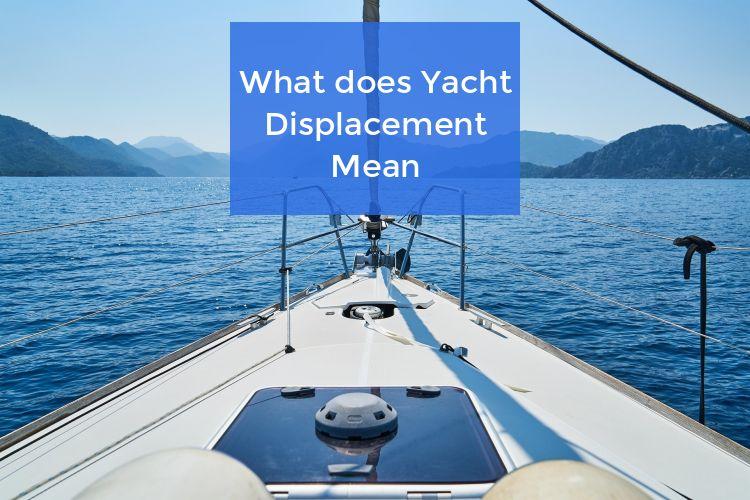What does Yacht Displacement mean!

Learn what yacht displacement mean!
There are a few attributes and ratios which can be used to determine the performance and other statistics of yachts. These include the displacement ratio, the ballast ratio, angle of vanishing stability, form stability and much more. What these statistics are used for is to determine in general terms the heaviness, stiffness and velocity of boats as means of comparison. Yacht displacement is one of the first factors to be considered.
In simple terms:
“Yacht Displacement is the weight of the water that is moved when the yacht is out at sea”
The weight of the water that is displaced is equal to the weight of the yacht and its load (fuel, water, provisions, etc). It is an indicator of how heavy a boat is. Displacement also includes ballast. It is sometimes listed separately and gives an overview of what is hidden under the water. Yacht displacement is usually measured in tonnes.
You can get these statistics in the brochures of yachts but usually they refer to an empty tank yacht. In addition, sometimes the displacement adds some of the anchors or all of them, while other times it doesn’t. It usually depends on the manufacturer and how they advertise it. As a result, it is important to get all the information straight before going into comparison mode with just a figure.
How yacht displacement affects performance
Yacht displacement gives the weight of the boat, however making a comparison is not completely accurate unless the waterline length is also part of the comparison equation. This is why it is the displacement to length ratio that is the best indicator of how heavy a boat is, regardless of size.
Based on the displacement to length ratio boats are categorised into 5 groups, ultra-light, light, moderate, heavy and ultra-heavy. According to displacement, a heavy yacht will be able to move more water than a lighter yacht. In addition, a small displacement ratio means that the yacht has a smaller resistance in the water and is slower, while a higher displacement ratio means that the yacht is faster. Basically, a heavier yacht is more complicated to maneuver and takes more time to power through. A low yacht displacement to length ratio is not always a good indicator of general comfort and speed. A small ratio will of course indicate that the yacht is faster, however it should not interfere with the structural integrity of the vessel. All in all, make sure to look at the displacement as part of all the statistics of the yacht before placing your final judgement on its performance. Knowing all the facts beforehand is always better than making a quick decision.